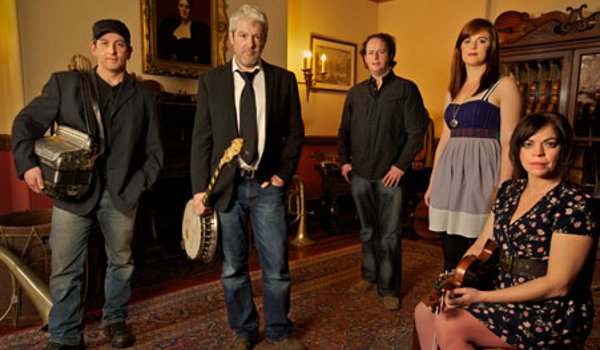SINCE their formation in 1994 Irish-American supergroup Solas have released 10 acclaimed albums and their latest release Shamrock City shows just how far they have come.
Inspired by founder member Seamus Egan’s family lore, the album is a triumph both musically and historically.
I caught up with American-born Seamus in Glasgow.
“I started playing when I was about six or seven,” he says. “We were living in Foxford, Co. Mayo and the music teacher, Martin Donoghue, came to the town once a week. My parents sent me and my sisters down to the town hall with some tin whistles and that’s how we started out.”
“We competed in the Fleadhs and all the usual stuff and then my family moved back to the States – to Philadelphia. I would have been about 12. I hadn’t really thought much about continuing with music on any level but one Friday night my parents brought me down to the Irish Centre in Germantown.
"The centre has been there for decades and it’s been a focal point for the Irish community. It was actually the place where my parents met – at a céilí – and it was a place for the music to be played”.
So the Irish Centre renewed your interest in the music?
“Well it was there that I met Mick Moloney,” Seamus says. “Mick had moved to the States from Limerick in the early ‘70s. I had grown up listening to him on the radio. He was the reason I was playing the banjo and mandolin. He took me under his wing and I would go over to his house on the weekends where most of the musicians that were either coming from Ireland, or were already in the States, would be in Mick’s house.
"For someone like me at 14 or 15 years old to be exposed to these musicians, whom I had only ever heard on the radio or had their albums, was great. Getting to play with them re-energised and re-ignited my interest in playing. Mick eventually started taking me out on some of the gigs and I started touring with him.”
So you could say Mick Moloney has had a big influence on a lot of people over the years?
“He has, both on an individual sense and also a larger sense,” Seamus agrees. “His contribution to Irish culture in the States and particularly with the music is immense. You could safely say that without a lot of the ground work that he put in in the ‘70s and through the ‘80s there are a lot of things you could tend to take for granted now, that just wouldn’t be there.
"He took something that perhaps was not really valued as a contribution to the cultural fabric of America into something that was very vital and representative of an enormous percentage of America.“

Where did Solas spring from?
“By accident really,” Seamus says. “I was living in New York at the time and playing around the city with John Doyle and Eileen Ivers. We were in a band called The Chanting House with Susan McKeown and we had one residency in Paddy Reilly’s on the East Side every Monday night.
"It grew and we would get people sitting in who happened to be in town - not just Irish musicians. John and I were asked to put something together for a festival so we got in Winifred Horan from Cherish the Ladies and John Williams. It went well and that led to more festivals.”
He adds: “Everybody was saying at the time that I had to hear this girl Karan Casey but it turned out that she lived just three doors down from me. She was up for giving it a go and we were asked to do a radio show called Mountain Stage – a live radio show with an audience.
"That was the first national exposure that we would have had in the States. They wanted a name to call us so we settled on Solas and suddenly we had a band.”
The band went on to make a bunch of albums with Shanachie Records and Compass Records before deciding to go it alone. The various changes in line-ups over the years have simply served to enhance their reputation.
So how did the Shamrock City album come about?
“It was really an album that had been coming around for a couple of years but the story behind was perhaps a 10-year thing from how it started,” he says. “We had been invited to play at a festival in Butte (Montana). My father asked me to see if I could find out about Michael Conway, his great uncle who had left Ireland in 1910 and ended up in Butte.
"We had very little information but the people there put me in touch with the historical archives. It turned out that he worked for a company called The Black Rock Mines and they had the dates he started and ended when he died.”
Michael Conway was also a bare-knuckle fighter and after he won a fight (organised by the local sheriff in Butte) that he was supposed to lose, he was beaten to death by two policemen. He was 25 years old and was buried in an unmarked grave.”
Seamus adds: “Trying to find out more about Michael Conway led to finding our more about Butte and we realised it was a very interesting story about the part Butte played in Irish history and the history of Irish emigration to America. It was a learning process and at the end of it we realised it was just an emigration story that encompasses a whole lot of other things.
“The song Michael Conway is probably my favourite track on the album but at six minutes long it probably won’t get much radio play. Hopefully it will be picked up by other singers because of the great folk story.”
Shamrock City is out now through Copperplate.

